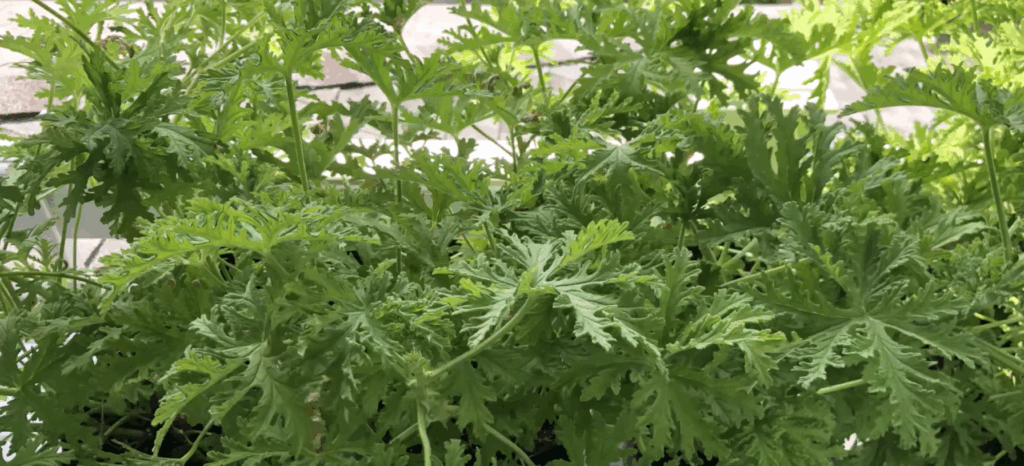What is a Citronella Plant?
Citronella plant (Cymbopogon) is a popular aromatic grass known for its natural mosquito-repellent properties. Widely grown in gardens, patios, and indoor containers, it is valued for its strong fragrance, easy maintenance, and ornamental appeal. There are different varieties, including citronella grass and citronella geranium, both offering unique scents and uses.
Varieties
Citronella comes in two main types: citronella grass, commonly used for mosquito repellent and ornamental purposes, and citronella geranium, prized for its aromatic leaves and essential oil production.
Perennial or Annual
Citronella plants are generally perennial in warm climates but can behave as annuals in cooler regions. Protecting them from frost ensures longevity and healthy growth season after season.
Mosquito Repellent
One of the main benefits of citronella is its natural ability to repel mosquitoes. Its fragrant oils are released when leaves are crushed or rubbed, making it a popular plant for gardens and patios to keep pests away.
Citronella Plant Types & Varieties
Citronella plants come in multiple varieties, each with unique characteristics, scents, and uses. Choosing the right type depends on whether you want ornamental appeal, mosquito repelling, or essential oil production.
Citronella Grass
The classic mosquito-repelling grass with strong citrus aroma. Ideal for gardens and patios. Can grow up to 3–6 feet tall.
Citronella Geranium
Aromatic plant with scented leaves. Popular for essential oils and indoor decoration. Smaller and more compact than citronella grass.
Other Varieties
There are hybrid types and dwarf varieties suitable for pots and indoor use. These plants retain fragrance and mosquito-repelling properties but remain compact.
How to Plant Citronella
Planting citronella is simple if you follow the right steps. It can be grown from seeds, cuttings, or small potted plants. Choosing the right location, soil, and planting method will ensure strong growth and a healthy, fragrant plant that also helps keep mosquitoes at bay.

Soil Requirements
Citronella thrives in well-draining, fertile soil rich in organic matter. Sandy or loamy soil is ideal. Avoid waterlogged areas as excess moisture can cause root rot and stunted growth.
Sunlight
Citronella requires full sunlight for at least 6–8 hours a day. Ensure your planting area receives ample light to encourage vigorous growth, lush foliage, and strong aroma for mosquito repelling.
Planting Spacing & Depth
Plant citronella cuttings or seedlings about 18–24 inches apart to allow airflow and growth. Ensure roots are fully covered and soil is gently pressed to eliminate air pockets. Maintain soil moisture but avoid overwatering.
Tips: Water regularly in the first few weeks to establish strong roots. Mulch around the base to retain moisture, control weeds, and enhance soil fertility for better growth.
Citronella Plant Care: Ideal Growing Conditions
To grow healthy citronella plants, it is important to provide the right environmental conditions. Proper sunlight, well-draining soil, adequate water, and temperature management are key factors for strong growth and maximum mosquito-repelling benefits.
Sunlight
Citronella thrives in full sun but can tolerate partial shade. Ensure at least 4–6 hours of direct sunlight daily for robust growth and stronger aroma.
Soil
Well-draining soil is essential. Sandy loam enriched with compost or organic matter helps retain moisture without waterlogging the roots.
Watering
Keep the soil moderately moist. Water regularly during hot months but avoid overwatering, as waterlogged soil can damage roots.
Temperature
Citronella prefers warm climates (65–85°F / 18–29°C). Protect plants from frost in colder regions or move potted plants indoors during winter.
Tips: Regularly monitor sunlight exposure, maintain well-draining soil, and avoid waterlogging. Proper care ensures strong growth, fragrant leaves, and effective mosquito-repelling properties.
Caring for Your Citronella Plant
Proper care ensures that your citronella plant thrives and continues to repel mosquitoes effectively. Focus on watering, fertilization, pruning, and seasonal maintenance to keep it healthy year-round.
Watering
Keep the soil consistently moist but not soggy. Water deeply once or twice a week depending on weather and container size.
Fertilization
Use a balanced liquid fertilizer every 4–6 weeks during the growing season to support strong, fragrant leaves.
Pruning
Trim dead or yellow leaves to encourage new growth. Cutting back after flowering can promote bushier foliage.
Pest Control
While citronella repels mosquitoes, inspect for aphids or fungal issues. Use organic sprays if necessary to protect plant health.
Citronella Plant Propagation & Buying Tips
Growing your own citronella plant can be rewarding. Understanding propagation methods, where to buy healthy plants, and tips for successful planting will ensure your citronella thrives and continues to repel mosquitoes naturally.
Propagation Methods
Citronella can be propagated via seeds, cuttings, or division. Stem cuttings and division of mature clumps are the easiest methods for quick and healthy growth.
Buying Tips
Purchase healthy, disease-free plants from nurseries or trusted online sellers. Look for vibrant green leaves and strong stems. Avoid plants with yellowing or wilted foliage.
Container Planting
Citronella grows well in pots. Choose containers with good drainage and use nutrient-rich soil. Ideal for patios, balconies, or indoor spaces where mosquito control is needed.
Seasonal Tips
During winter, protect plants from frost by moving containers indoors or covering outdoor plants. Regularly check for moisture and sunlight requirements during seasonal changes.

